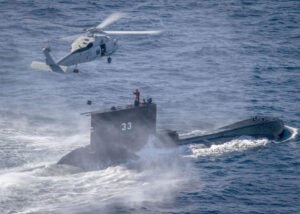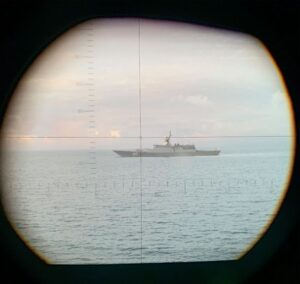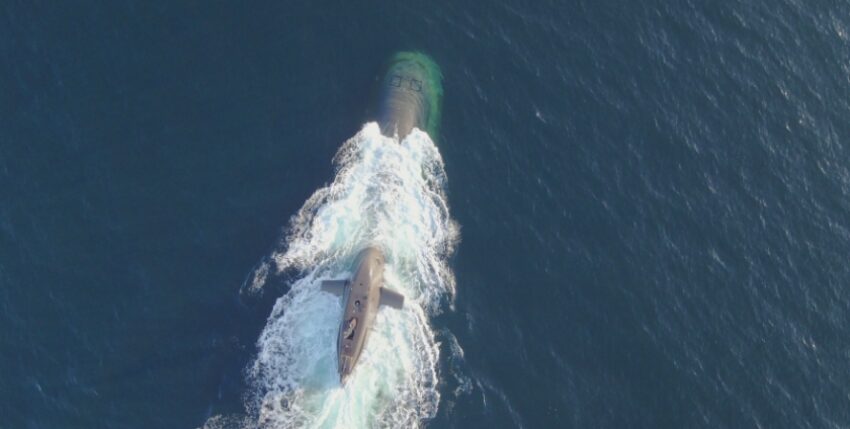Even the possible presence of submarines in a sea area binds the enemy forces. This is because their core contribution to modern naval warfare is clear.
Submarines are as fascinating as they are mysterious. They disappear into the depths of the oceans, appear unexpectedly and without warning from the shadows, are extremely difficult to find and usually operate alone and can only be reached sporadically. These are facts that will not change in the foreseeable future. This picture encourages debates about their role in modern naval warfare, which erupt time and again - especially after a security policy caesura. As was the case in the 1950s and 1990s, a new tension is currently emerging between potential capabilities and acute benefits. The deployment in mandated missions (most recently Sea Guardian and IRINI) demonstrates a desire for relevance outside of "classic" naval warfare and the naval forum is also repeatedly dedicated to the all-purpose weapon submarine: the achievements of the 1st Submarine Squadron in the further development of ASW were presented in a striking manner and submarines were promoted as a particularly suitable platform for Deep Precision Strike (DPS). Approaches to reforge "old" iron. But is there really a need for a "new" role for German submarines?
The development is going in the wrong direction. The tendency to turn the submarine into an "egg-laying wool-milk sow" ultimately results in a Swiss army knife without any real benefit. It is based on the false assumption that the role of submarines in the "Great Power Conflict" must first be found and completely ignores their existing core contribution to modern naval warfare: offensive naval warfare against surface forces. After reprioritisation to LV/BV, this must be the mandatory point of reference for any derivations.
The aforementioned contributions to the further development of submarine hunting will primarily benefit Flotilla 2 and naval aviation. Conventional submarines, on the other hand, are not and will not remain the means of choice for offensive submarine hunting. They are slow, have comparatively short detection ranges and are extremely limited in terms of space. They can therefore only be used to a limited extent against other submarines without the support of third parties. The thesis "the best means against submarines are submarines" originates from NATO's concept for strategic ASW and the use of nuclear-powered fighter submarines against the Soviet SSBN bastion in the Barents Sea (see here) and is not transferable to conventional submarines. The arguments in favour of submarines as a DPS platform are purely strategic in nature and neglect the tactical and operational level. Of course, "distributed lethality" in combination with an element of surprise - which can be achieved exclusively by submarines - has advantages over other potential capability carriers at sea, on land or in the air. However, this is the only one! A submarine has a very limited supply of weapons and can only fire a few missiles at a time. This severely restricts its ability to assert itself, prevents the submarine from being used for other missions - due to a lack of effective means - and exposes the submarine to a considerable risk of destruction. The de facto contribution of a conventional submarine to DPS at the operational level is small, exposes this high-value unit to considerable risk and prevents its effectiveness at the tactical and operational level in naval warfare.

The role of conventional submarines in the context of NATO operations in the German priority region of the Baltic Sea is almost self-evident. "[Naval forces must] cover the left flank of NATO's land forces in Poland and the Baltic [...] [and] operate continuously under high threat [in the Baltic Sea]." Submarines are made for this task. They are the only capability that can operate here almost unhindered and destroy enemy platforms without effective defences. According to Hughes, they are the only ones capable of implementing the maxim "Attack effectively first" in the A2/AD battlefield of the Baltic Sea. This is independent of the technological means.
In principle, submarines work on two levels. Firstly, kinetically, and secondly through their psychological effect on the enemy's ability to lead. The first effect is obvious. A sunk ship immediately reduces the enemy's capabilities. The second is trickier but fundamentally more powerful. The suspected or proven presence of a submarine in the area of operations has a direct influence on the enemy's ability to act. This limits its ability to achieve tactical and operational objectives and influences the allocation of forces in space and time. In the 1971 Indo-Pakistani War, PNS Hangor's bold strike ended the Indian Navy's offensive strikes against the Pakistani naval base at Karachi. In the 1982 Falklands War, the Argentine submarine ARA San Luis had a lasting impact on the deployment of British naval forces throughout the conflict. By sinking the heavy cruiser ARA General Belgrano and the shock this caused, the British navy eliminated the Argentine navy as an actor in one fell swoop. The submarine acted as a "fleet in beeing", undermining the effect of the A2/AD approach, effectively denying the enemy the use of the sea itself (sea denial) and deciding the naval war - a "capital ship".

In the past, submarines have taken on a variety of additional tasks: Reconnaissance, mine warfare, special forces support, strike, etc. However, a submarine can only effectively fulfil one task at a time due to its limited weapon capacity, personnel resources and mobility. It is like a sabre, well placed and correctly used by horse and rider - deadly. However, if you use the back of the blade or stand far away from the enemy, the weapon is useless. A look back in history underlines this thesis. Submarines always achieved operational effects when they could work against the enemy's centre of gravity. Prioritising other tasks was never effective and was disproportionate to the losses elsewhere.
So what is the role of conventional German submarines? To neutralise the enemy fleet by destroying it or threatening to do so. It would be fatal for a German submarine to be at sea with only a few torpedoes as a DPS platform at the outbreak of war or to be spatially bound in the hope of detecting an enemy submarine and unable to act in the centre of gravity. According to Keegan, German submarines are the "capital ships" of the Baltic Sea!
Back to the initial question: Do German submarines need a "new" role? No, because they have one and it is still highly relevant. It is imperative to equip the Ubootwaffe for this role, to provide it with the means to fulfil it in a changed technological environment and not to waste resources on subordinate capabilities.
How many submarines does it take to influence the enemy's operations? - One! At sea and with the will and ability to fulfil its mission.
Lars Bahnemann










